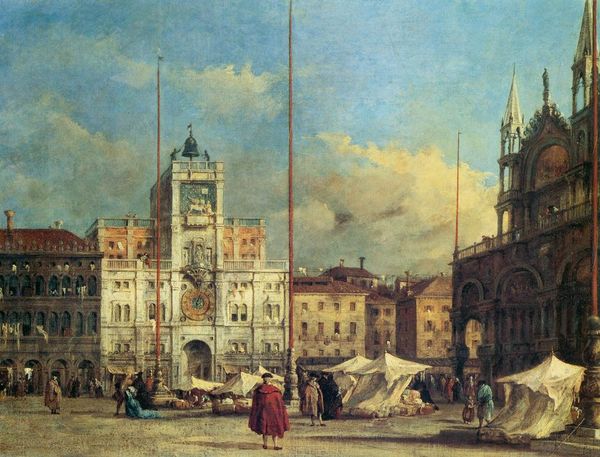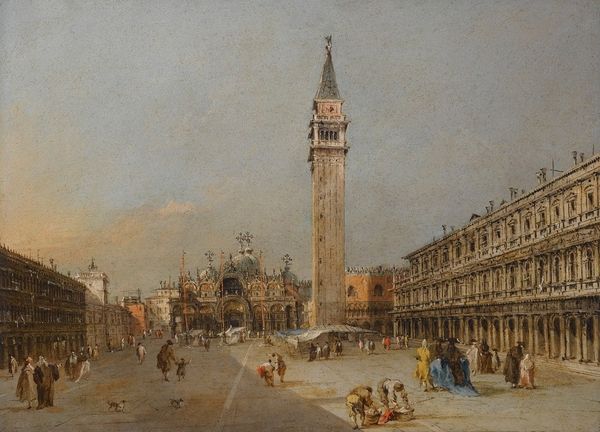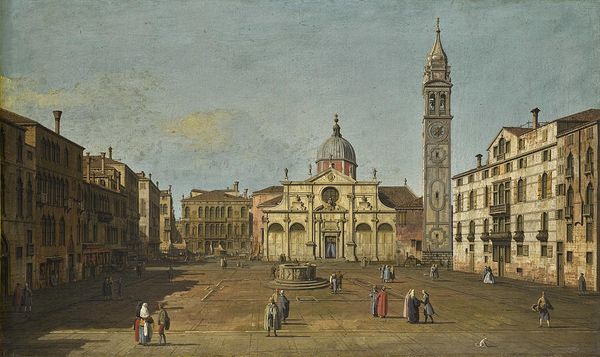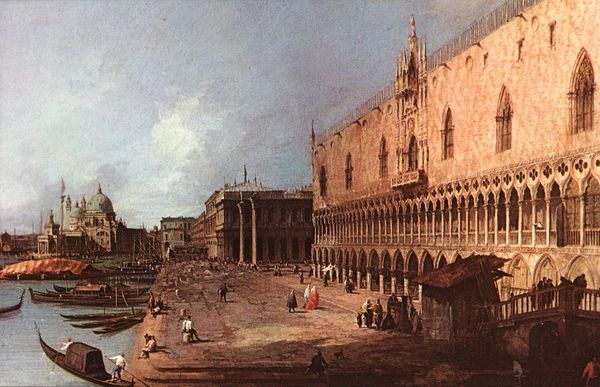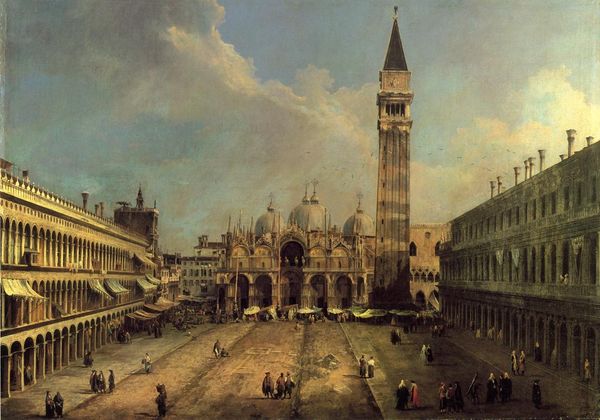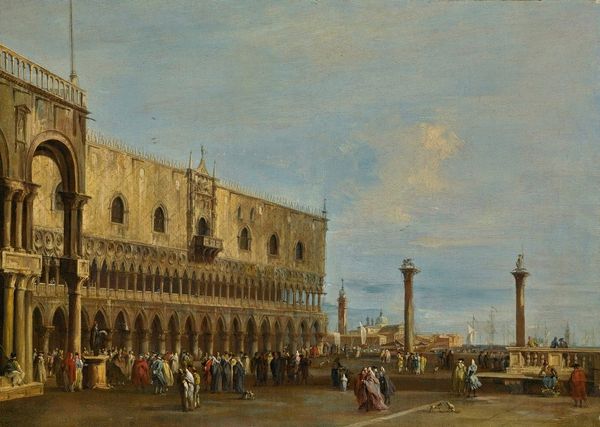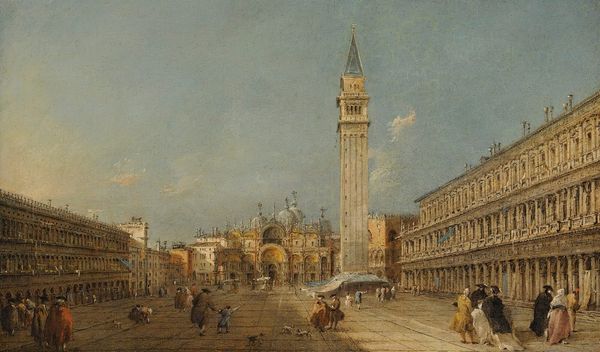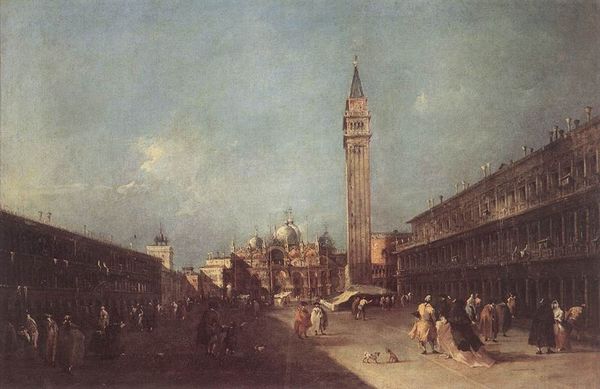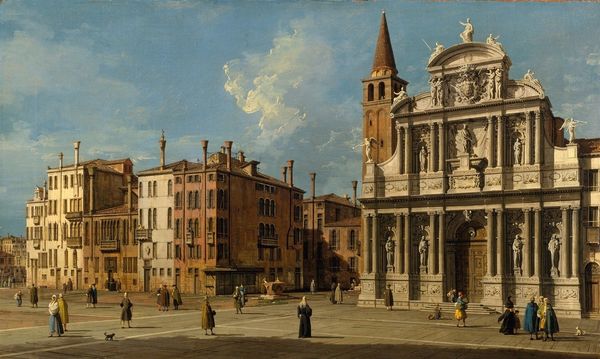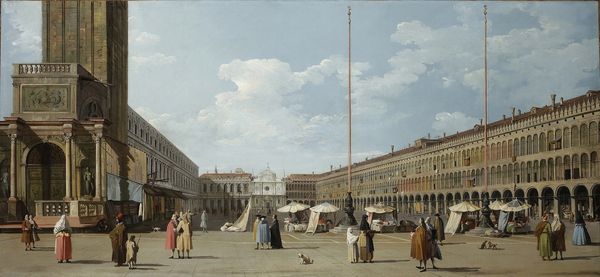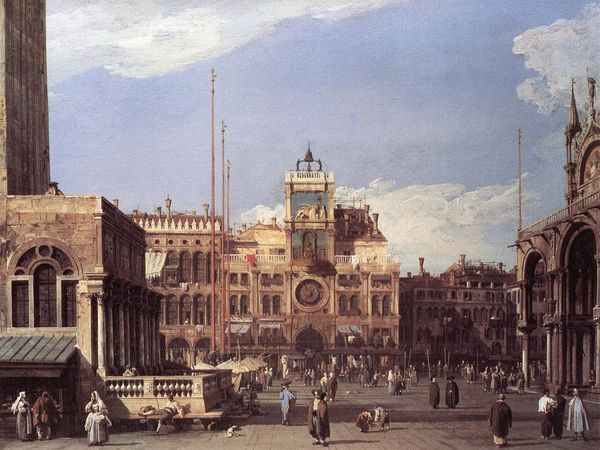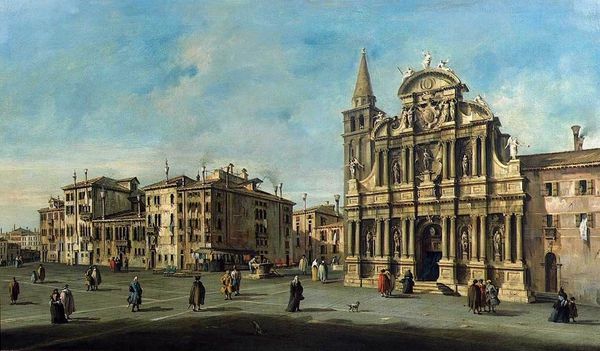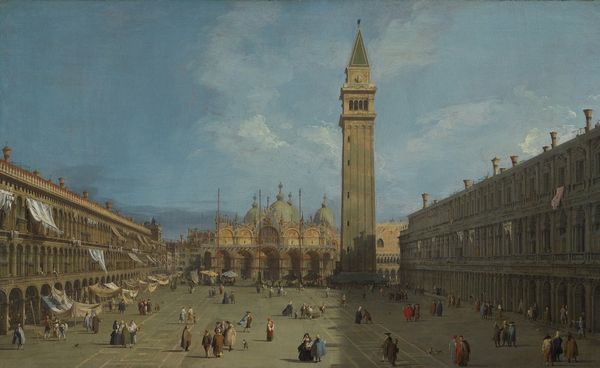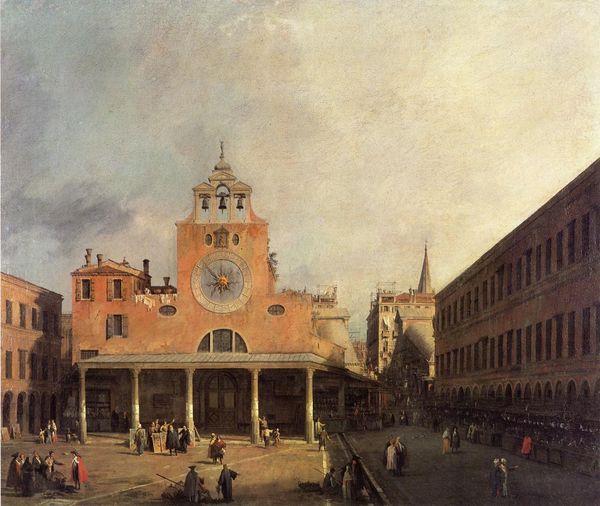
Copyright: Public Domain: Artvee
Editor: This is Francesco Guardi's "Vue de la place Saint-Marc, à Venise," painted around 1760. It’s oil on canvas, and the colors feel muted, almost dreamlike. It gives a sense of bustle, yet there is a detachment because the artist's hand is very visible, loose and sketchy. What do you see in this piece? Curator: Well, Venice itself is already laden with symbolic weight; its waterways, its architecture. Guardi captures its Serenissima, the most serene republic's unique essence. Consider the light. The golden haze seems to hint at transience, doesn’t it? Even the Church’s golden mosaics get filtered through that haze, a reminder that earthly glories, even those divinely inspired, are ever-shifting. Notice how Guardi employs rapid brushstrokes and broken color; how might this express a particular idea of Venice? Editor: I see what you mean. The broken color seems less about specific detail and more about an impression of the city. It doesn't have the detailed, crisp style of Canaletto. Curator: Precisely. Guardi uses the iconography of Venice—St. Mark's, the square—but interprets it through a distinctly personal and evocative lens. The bustling figures become universal. What feeling do they evoke? Are they portraits of Venetian citizens, or representatives of an active humanity? How might a psychologist view them? Editor: That's fascinating; the golden haze seems to hang in the air, the active humans moving in time. So Guardi gives us a cultural memory of Venice, yet makes it part of something larger about humanity's ever-changing story. Thank you. Curator: It is important to look for these human values in an art historical image. Perhaps the images tell more about who we are as people than Venice as a location. Thanks to you.
Comments
No comments
Be the first to comment and join the conversation on the ultimate creative platform.
